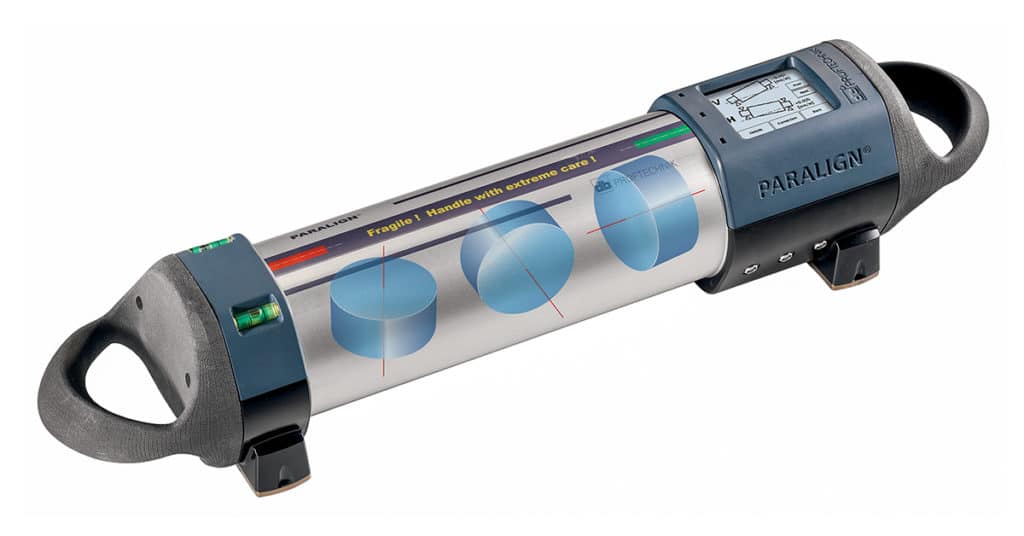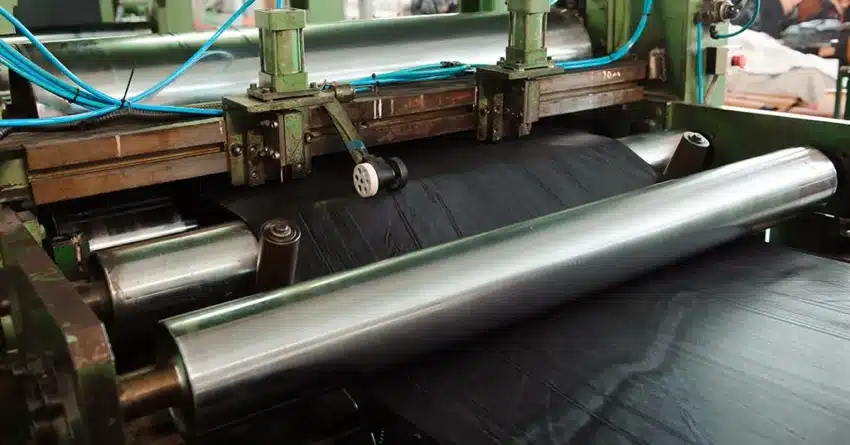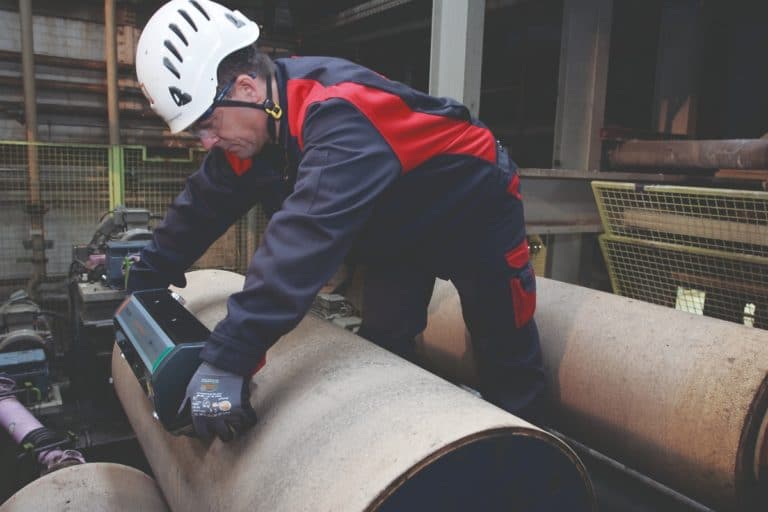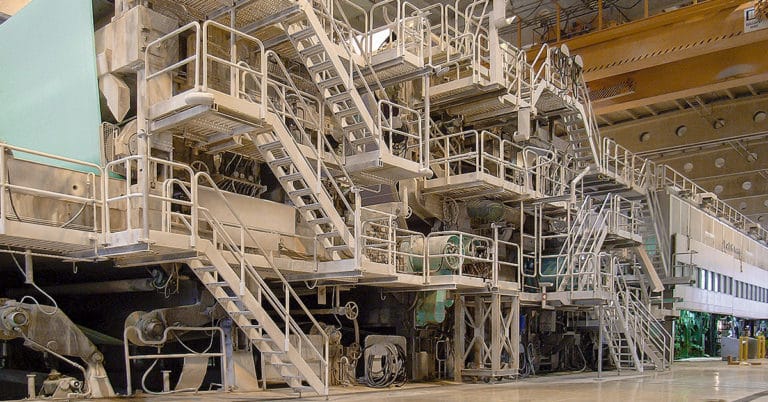BFGoodrich, the legendary tire manufacturer, counts itself as a satisfied customer of the Prüftechnik ParAlign roll alignment service, based on the results delivered at its Fort Wayne, Ind., plant.
“We have been running a superior product for six months since the alignment,” said Jay Linnemeier, the engineer in charge of the fabric calender at the Fort Wayne plant.
Before we detail the misalignment concerns at the BFGoodrich facility, let’s discuss why rollers’ parallelism in the tire industry is so critical.
How small misalignment issues become big ones
Today’s tires are a composite of several materials, including steel, nylon, polyester, Kevlar, and fiberglass. The structure consists of layers of coated fabric and metal belts produced by calendering. The machine used to coat the fabric with rubber is called the fabric calender or calender train. The material in these machines runs at approximately 150 to 200 feet per minute. Due to deflection and vibration, the slow progression of a few hundred-thousandths of an inch will eventually lead to alignment issues throughout the calendering machinery.
Misalignment produces problems with tracking and web thickness, resulting in a lower-quality product. Over time, it causes poor roll surfaces, worn bearings, and possible tears or breaks in the web. To consistently yield the best quality sheet, a calender machine requires constant attention and adequate maintenance. Routinely measuring rolls for parallelism ensures safe and efficient machinery and a high-quality end product.
Prüftechnik designed the ParAlign measurement system to adapt to all industries where sheets are produced with critical tolerances. Users place the device on the roll’s face and sweep it a minimum of 20 degrees on the roller’s surface. Measurements are determined by three, highly-precise, ring laser gyroscopes contained within the unit. ParAlign records calculations and sends the measurements wirelessly to a computer, laptop, mobile phone, or another smart device that displays a clear graphical report enabling speedy evaluations.
ParAlign captures measurements five to 10 times faster than traditional methods. The system can profile an entire machine in one day and precisely identify which rolls are causing problems. The diagram that accompanies all ParAlign services provides the horizontal and vertical offsets of each roll and simulates the web path showing where slack and tension could be occurring.

ParAlign uncovers more than one roll misalignment issue
BFGoodrich, headquartered in Charlotte, N.C., hired Prüftechnik and its ParAlign Roll Alignment Services to check for misalignment of the roller’s post-calender section at the Fort Wayne plant. The company sought to eliminate roll misalignment as a variable in a problem it was experiencing. The coated fabric was winding up with a wrinkle along the length of the web. Plant leaders knew it was occurring in the second half of the calender train and suspected it was coming from the overhead rolls just before the windup.
In less than a day, the post-calender section rolls throughout the plant’s first, second, and third floors were measured using ParAlign. By looking at the protocol results, it was apparent that the overhead rolls were misaligned. Some showed an offset as high as five-eighths of an inch.
The main scope of the work was to get a layout of the machine. However, in measuring the line, the protocol revealed an additional misalignment problem.
All the rolls in the festoon’s bottom row were leaning to the east, approximately 0.150 inches compared to the reference roll. They were positioned close to the windup, so it was suspected that this offset could be adding to the wrinkling problem. Ultimately, the ParAlign roll alignment system enabled BFGoodrich to plan and set a date for corrective maintenance immediately.
“We saw a drastic improvement,” said Linnemeier. “The Prüftechnik technology moves at a faster pace than the four mechanics could make the adjustments. It is also very impressive to make mechanical adjustments and verify the positions instantaneously—and accurately.”
As part of the ParAlign service, each client receives a readout of the current roll positioning for maintenance teams to address.
“The complete calender train layout and graphical spreadsheet are very helpful tools,” he added. “The layout lets you look at every roll location and relative position. With so many rolls to work with, this makes for cleaner communication between operators, maintenance, and the engineering teams.”






